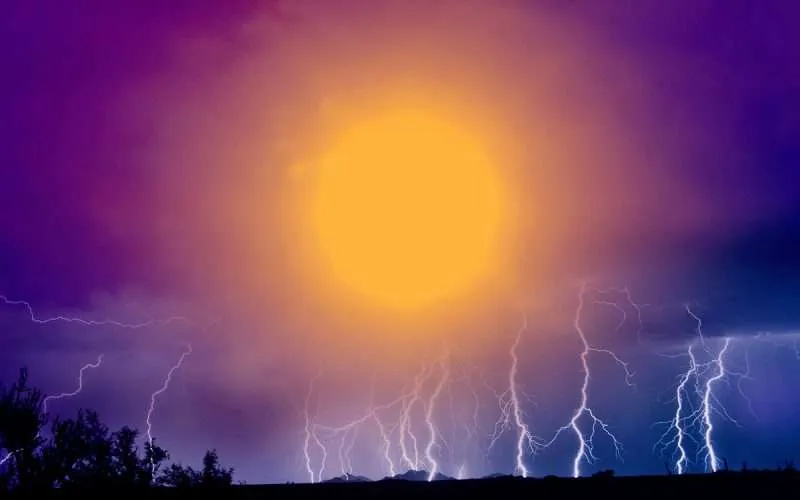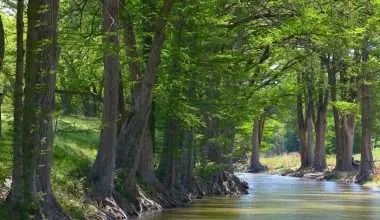Table of Contents Show
Since time immemorial, humanity has tried to overcome natural disasters and conquer Nature. Yet, despite modern developments, we remain prone to catastrophes.
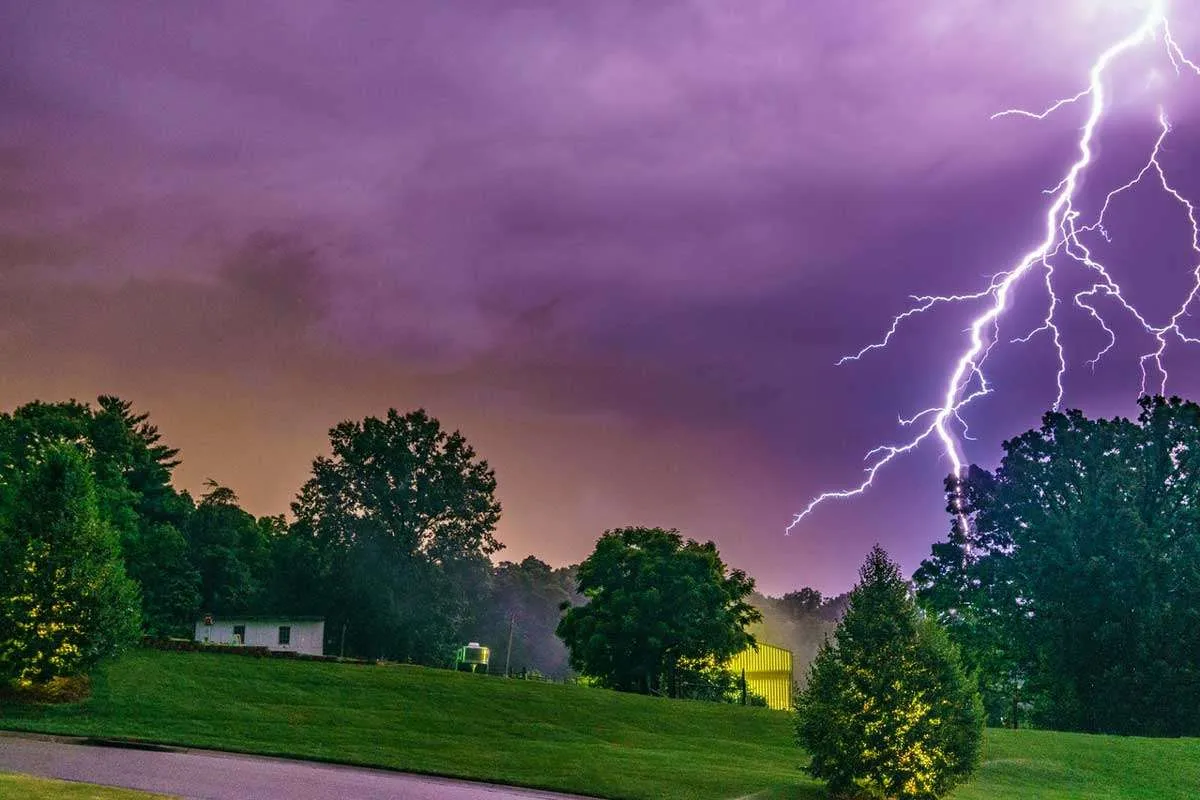
One such disaster is lightning. Natural lightning often strikes during thunderstorms and is often accompanied by heavy precipitation. In truth lightning brings nutrients to the soil as well as unimaginable destruction to the land.
Essentially lightning is basically an extremely strong discharge of accumulated charges. That basically means that tons of electrical charges accumulate on small clouds. When these get disturbed they are all rapidly discharged onto the Earth. This is lightning.
A single bolt of lightning can have as much energy as 300 million volts. This may be enough energy for an entire city. With that amount of energy, it is no wonder that surviving a bolt of lightning is nearly impossible. That is why it is best to avoid going out during a thunderstorm altogether.
However, the same cannot be done for our trees. Our treasured trees cannot be quickly evacuated and stored temporarily in a safe location. This makes the trees quite vulnerable to lightning during a storm. Though some trees are more likely to be hit by lightning than others.
What Determines Where Lightning Hits
While humans as a species have yet to truly conquer and even perhaps harness the energy of lightning, we have done a fair share in understanding the phenomenon. Lightning is primarily a discharge of electrical charges. That means that it basically behaves as electrical current.
Hence, since lightning behaves as a current, it will, as a current, be attracted to the closest and most conductive material. This means that tall trees and those with high water content are especially in danger of being hit. Though perhaps that is a bit of an oversimplification if I may say so.
Lightning does not always strike the tallest object in the vicinity. Taller things are more likely to be struck than shorter objects. It is, however, far more intricate than that.
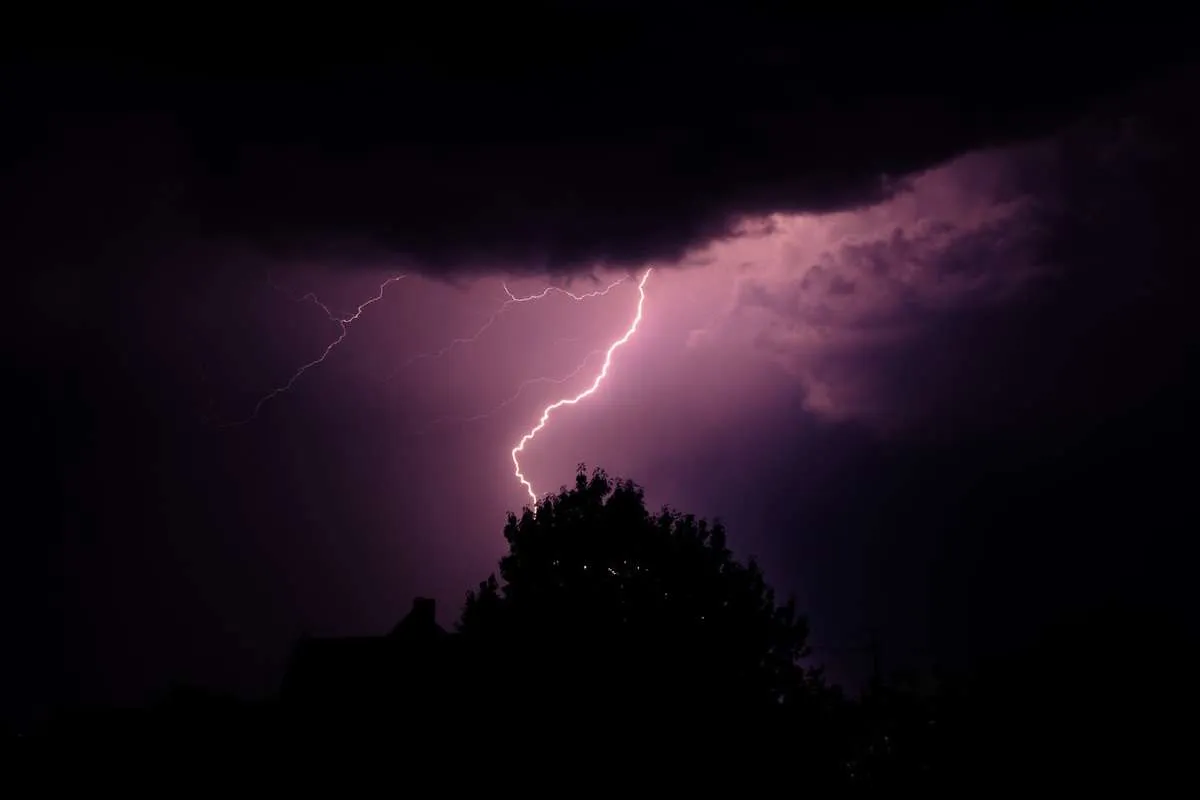
The likelihood of a lightning strike is determined by the striking density of your region as well as the height of the items in the vicinity. The probability of an item being struck is determined by its size, shape, and isolation.
There is a common misconception that finding cover under a tree during a thunderstorm can keep you safe. This is completely untrue. Lightning attacks trees in particular, and standing near one during a thunderstorm is highly dangerous.
Looking at the thunderstorm overhead is the only method to predict that lightning will strike but where it’ll hit is the crucial question. Lighting can strike anywhere from beneath the storm to three miles away.
Aside from that, the only means to predict where lightning will strike are strike density and the features of the items within that striking zone.
Strike Density
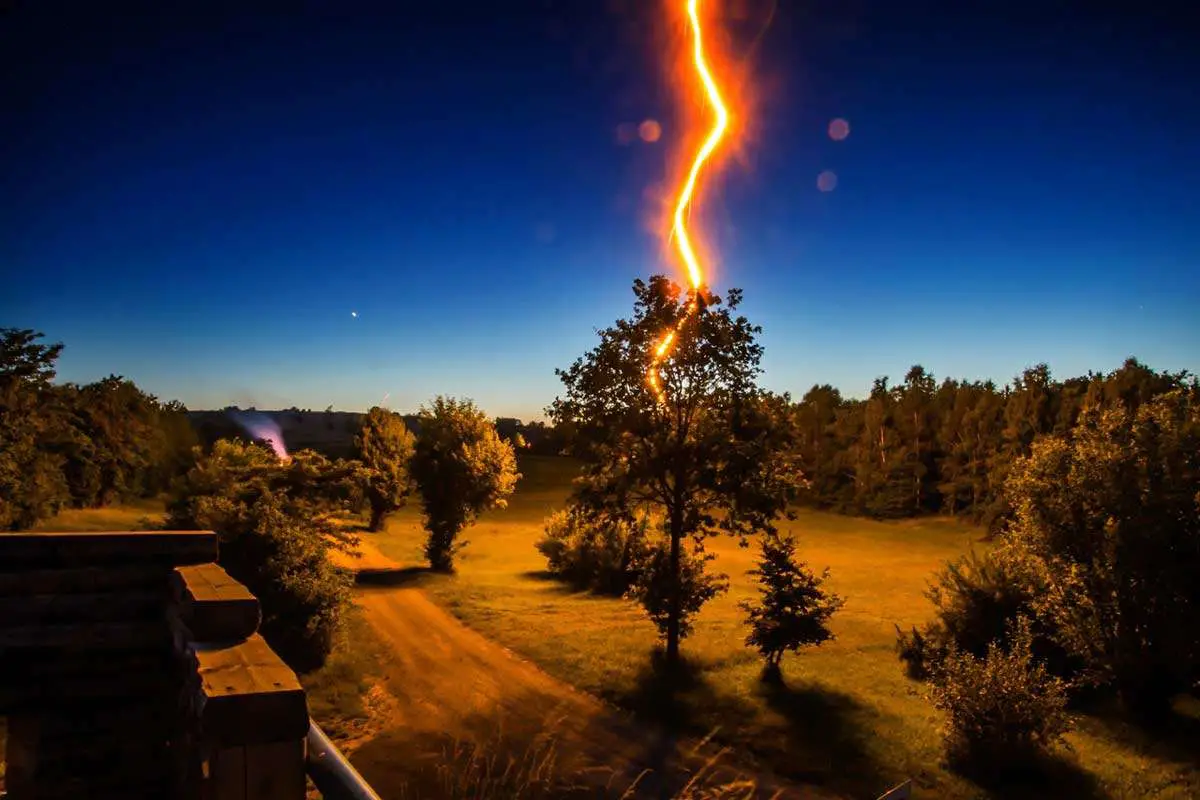
The amount of lightning strikes in a particular period inside a square area of land is referred to as strike density. This is how scientists calculate the likelihood of lightning striking specific items.
Experts have determined that trees get attacked more or less depending on the strike density zone that they are in.
Basically what this refers to is how often lightning strikes a particular area in a given period of time. The more often lightning strikes, the higher the strike density is. This quantity is often measured over a year and helps determine what trees are most affected by lightning in a particular area.
According to scientists if the strike density is 18 or higher then the height of the tree is not of much consequence. This means that if lightning strikes 18 times or more in a region over a time of one year then all trees in that area are at high risk of getting struck.
This is because the frequency of lightning strikes is way too high. With a higher frequency, the tree heights no longer play a significant role. Both short and tall trees are at risk in such a region.
However, if the strike density is below this quantity and lightning does not frequently fall on the region, then the tree height is quite significant. With lightning strikes becoming uncommon, the chance of a tall tree getting struck is much higher than a short one.
Evidence has shown, however, that regardless of the lightning striking zone and the height of items around the trees, certain trees are still more likely to be struck by lightning than others.
Effect of Lightning on Trees
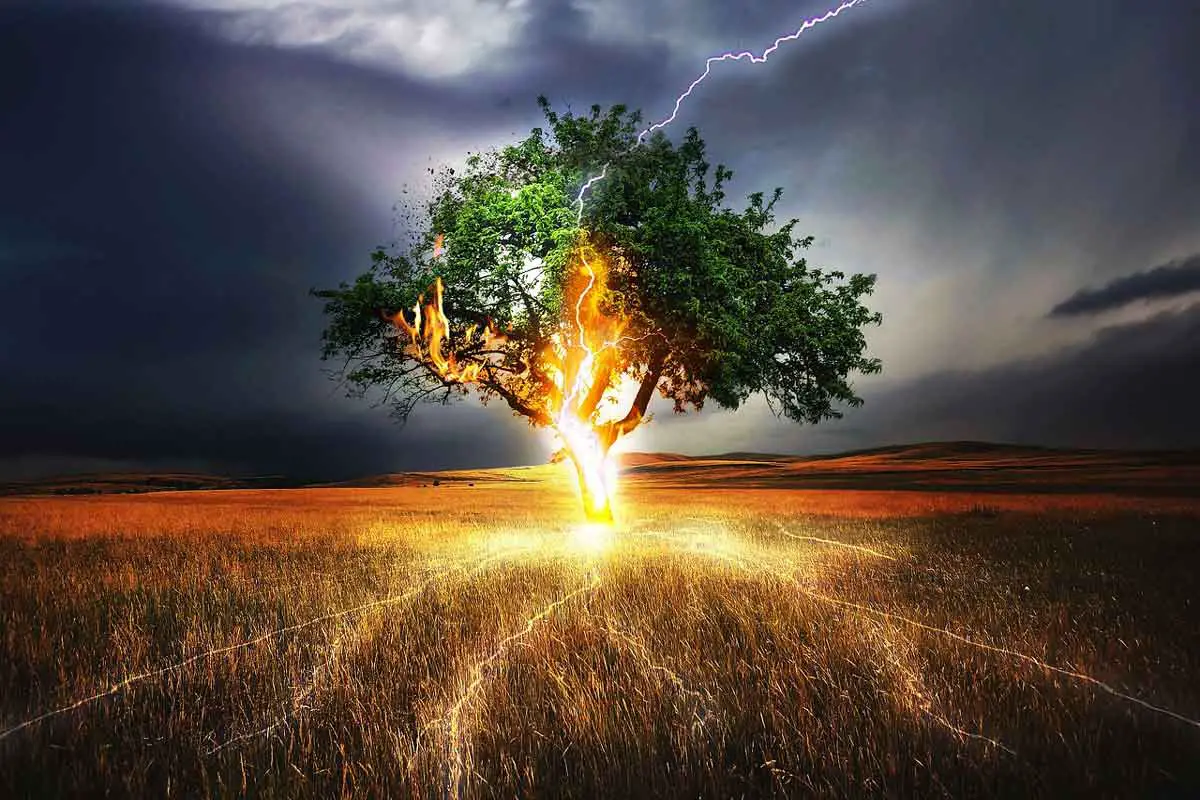
Since we have already established how lightning strikes, it is not shocking that trees are often the target of lightning strikes. This is primarily due to the fact that trees are tall and are frequently found in open fields. However, trees are also generally conductive. This means they offer very low resistance to electrical current.
Usually trees are filled with sap inside them. This is a thick liquid that carries nutrients and other necessary materials around the entire tree. The sap has water molecules as well as dissolved ions and minerals. These particles all offer a conductive path for electricity to flow thorough.
Since electrical current will always tend to take the easiest path, it will prefer to travel through the tree sap. So when lightning strikes a tree, it doesn’t just hit the top of the tree, the electricity actually flows through the tree all the way down the roots. This is what makes lightning so dangerous for trees.
To truly understand the scale of damage on a tree, we will have to look at this more methodically.
Initially as lightning strikes the top of a tree, it will cause an initial impact. This is where a lot of energy is dissipated. This lost energy can cause a fire, or crack the tree or even cause the entire bark to explode.
After this initial impact, the rest of the electrical energy travels through the tree and into the root system. This is what causes the most damage to trees. Not only is the root system damaged, at times irreversibly, but electricity also flows into the surrounding ground.
As electrical current flows through the ground, it can damage surrounding objects as well. These could include water pipelines and electrical wiring. In cases where the area around the tree is flooded, the water may become charged with electricity. This means that anyone who comes into contact with the water could be electrocuted. This makes being near a tree during a lightning storm particularly dangerous.
After the storm has passed and the tree has been damaged, it will be difficult for the tree to recover. Occasionally, the tree is able to recover and regrow in a year’s time. However, it really depends on whether the roots are able to repair themselves or not.
Once the root system of a tree has been damaged, there’s only about a 50% chance that it will recover. If the root system does not begin to recover within a year, it may never actually recover.
With all this talk about the destructive effects of lightning on a tree, it is only natural to wonder which trees are prone to get hit by a bolt. Following is a list of the top 5 trees with the greatest chance of getting hit by lightning.
5 Trees Most Susceptible to Lightning
Most of us living in cities probably have never witnessed lightning strike a tree. So for those of us that live in cities with high rise buildings, this is probably a foreign concept. The reason is that that in cities there are various tall structures made with metal reinforcement.
These structures are often taller than trees and are usually contain metals in the form of structural support. This makes the objects far more conductive than trees. Hence, the trees in the list are most susceptible to lightning in an open field.
1. Pine Trees
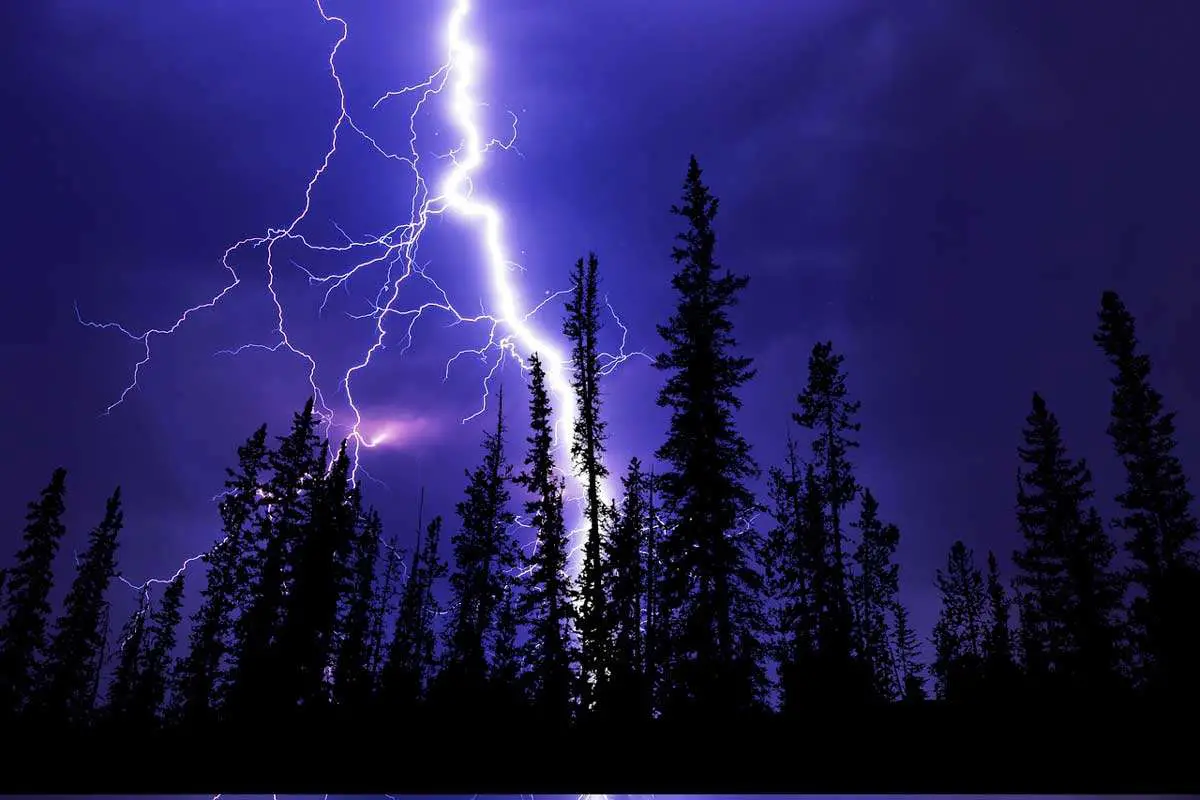
According to biologists, there are around 111 species of pine trees worldwide. Because they reside in dry settings, pines are drier than other trees, yet they are quite durable. They can only be found in the northern hemisphere.
Because pines are often quite tall, lightning is drawn to them. However, pines are not extremely resistant to lightning strikes and will only live for a portion of the time if struck. Pine wood has a high resin content, which means it conducts electricity better.
As a result, pine trees are more prone to erupt and be severely destroyed by lightning strikes.
2. Ash Trees
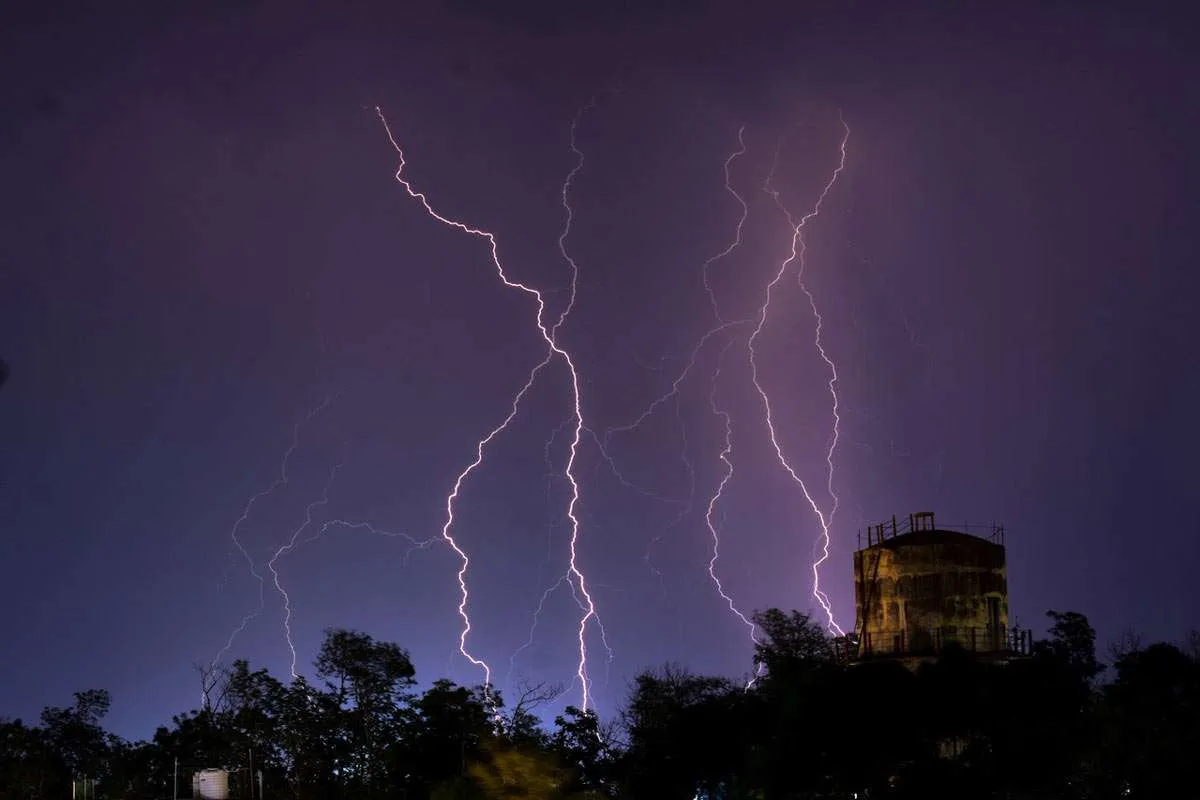
Ash trees are deciduous trees native to Asia, North America, and Europe. The majority of the species are small, but the lumber-producing ones may reach heights of up to 120 feet. There are over 65 distinct types of ash in the globe.
Ash trees, on the other hand, are susceptible to lightning strikes. Ash trees near water frequently have a greater degree of moisture in their root system, resulting in more severe damage in the event of a lightning strike.
These trees are distinctive in that they benefit both land and aquatic settings. They aid in the preservation of riverbanks and provide home for a variety of wildlife. They can assist to channel energy away from other sensitive items since they absorb lightning strikes!
3. Willow Trees
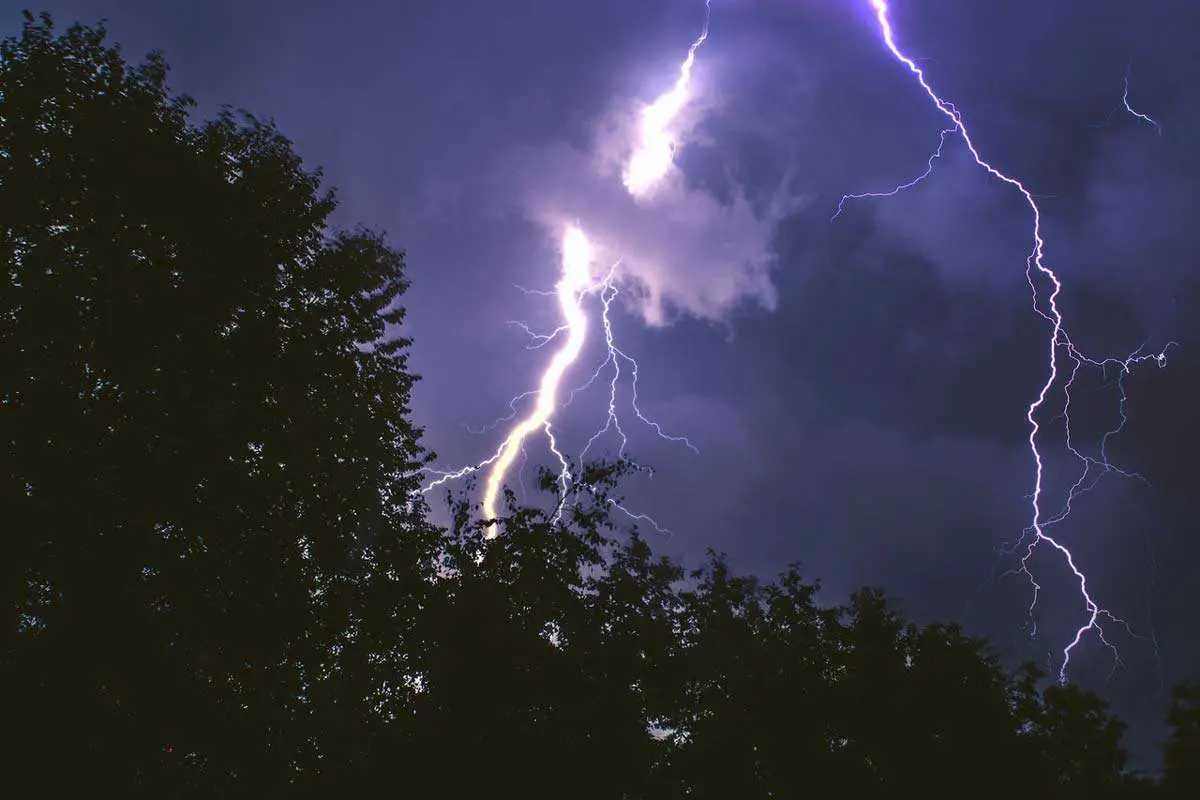
Willows are beautiful and majestic trees native to China that have spread throughout the northern hemisphere.
Some willows may reach heights of 70 feet! It’s no surprise that they’re more vulnerable to lightning than other trees. Willows are commonly impacted due to their greater water content than other trees.
The willow tree’s vast and invasive root system is another distinguishing feature. Willows are well-known for clogging sewage pipes and ruining pavements. Willow trees are good conductors of electricity and are susceptible to lightning strikes due to their high water retention.
Willows can suffer significant root system stress when attacked, making them unlikely to recover.
Fortunately, root damage does not always occur when a tree is hit. Most of the time, the lightening strike will only hurt the region that is directly touched.
4. Poplar Trees
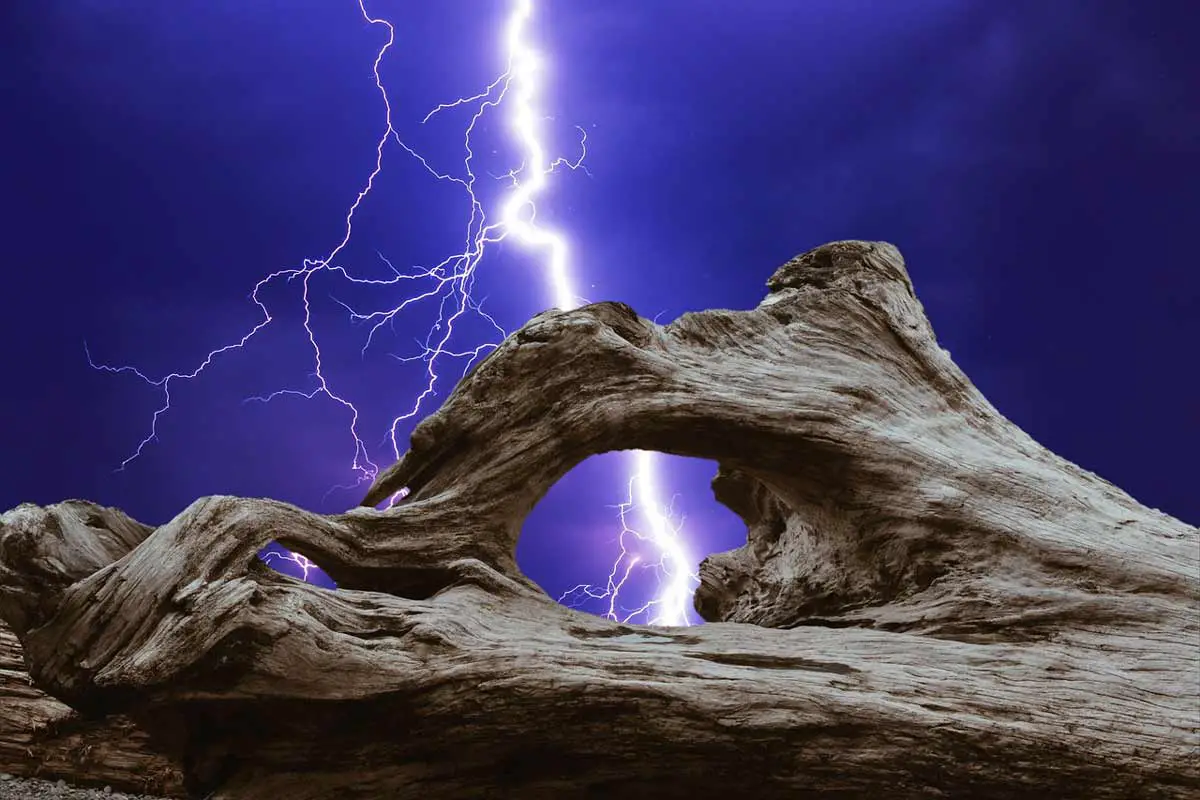
The poplar tree is native to much of the northern hemisphere but thrives in warmer climates. They may be a nuisance to homeowners because they block drains and ruin septic systems.
They are, nevertheless, lovely compliments to yards if planted correctly.
Poplars have a very limited life period, lasting just approximately fifty years.
Poplars grow quite tall, reaching heights of up to 165 feet despite their short lifetimes. This makes them great targets for a lightning strike. While they do not retain water like willow or ash trees, poplar trees are frequently closer to the sky than any other tree.
The tulip poplar, for example, may frequently soar beyond a forest’s tree canopy and stand alone as the tallest thing in the vicinity.
They are extremely susceptible to lightning!
5. Oak Trees
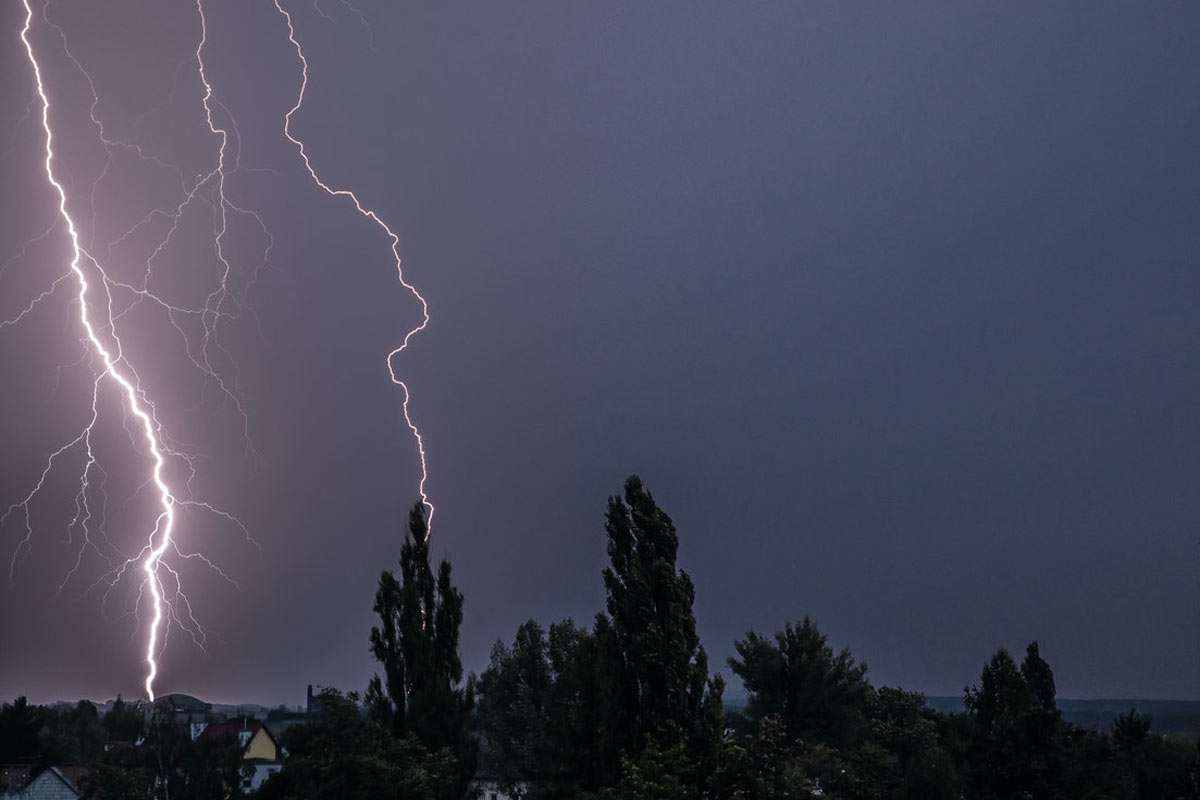
The oak tree is well-known for being the tree most likely to be hit by lightning! This is due in part to the fact that oak trees are notoriously taller than other species of trees. A mature oak tree may reach a height of 148 feet!
Oaks initially appeared on the globe 65 million years ago and may live for more than 1,000 years. They are quite powerful, and their timber is utilized for a multitude of purposes. Unfortunately, they are becoming scarce as a result of deforestation.
Aside from their evident height advantage over other trees, oaks are more susceptible to lightning strikes than other trees due to their higher moisture content. According to a scientific research study, oak trees were twice as likely to be struck by lightning than the next most lightning-prone tree.
The combination of height and wetness makes the oak tree vulnerable to lightning strikes under the right circumstances.
Protecting Your Trees From Lightning Strikes
Of course at this point just about anyone living in an open area would be wondering how they can avoid the devastating effects of lighting. It is actually not very difficult. Protecting your trees from lightning would only require you to install a lightning protection system.
A lightning protection system is basically carefully plotted copper wire along with metal rods. What it does essentially is use the copper wire’s ability to attract electricity. This causes the electrical current to flow through the copper.
The copper wires in turn are attached to the metal rods. These provide a path for the electricity and direct it deep underground. Here the electricity is safely dispersed into the Earth. This setup not only protects trees but also other nearby structures.
This is why it is advised to get a lightning protection system on trees around your house if you live in a high strike zone. This could potentially protect you from a side flash.
It would be interesting to know that the earliest lightening protection system with pointed lightening rod was introduced in United States in 1952 by Benjamin Franklin.
